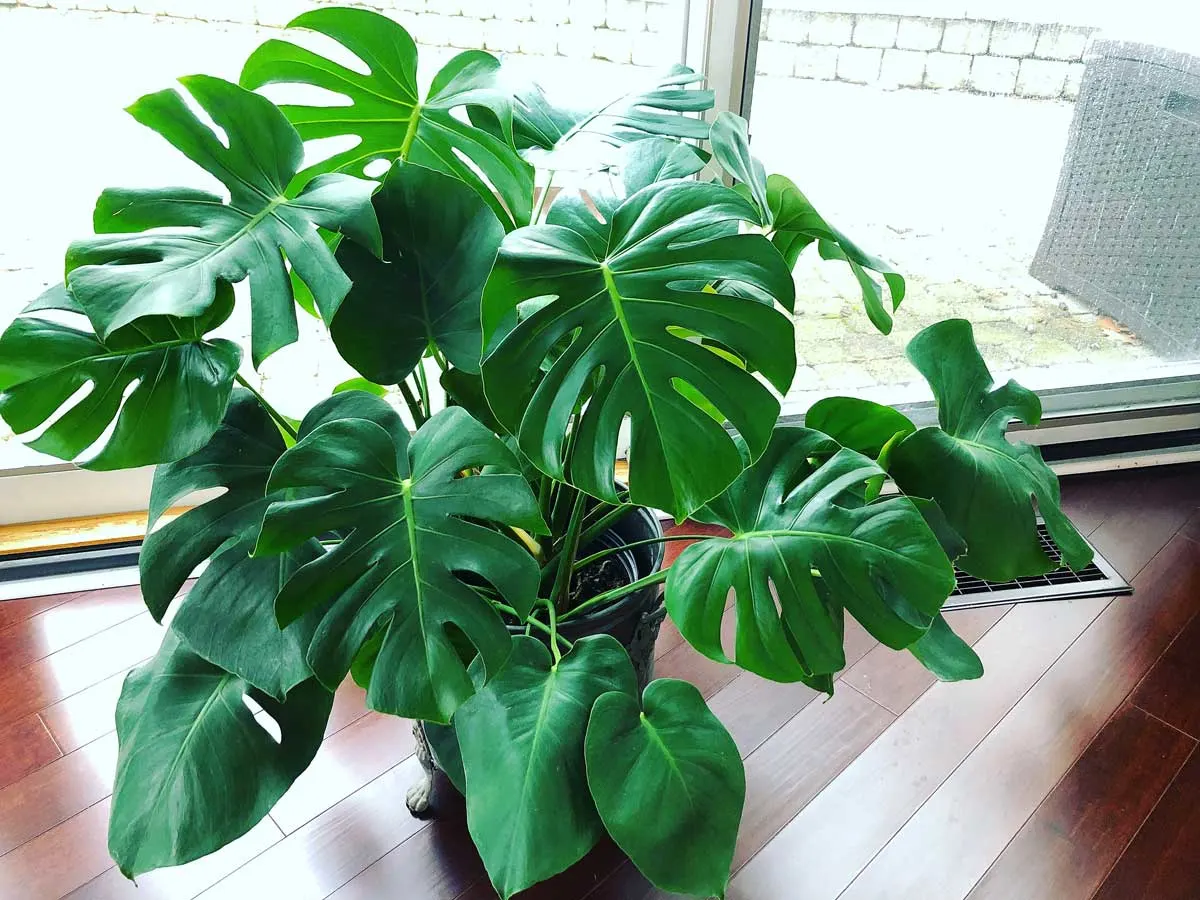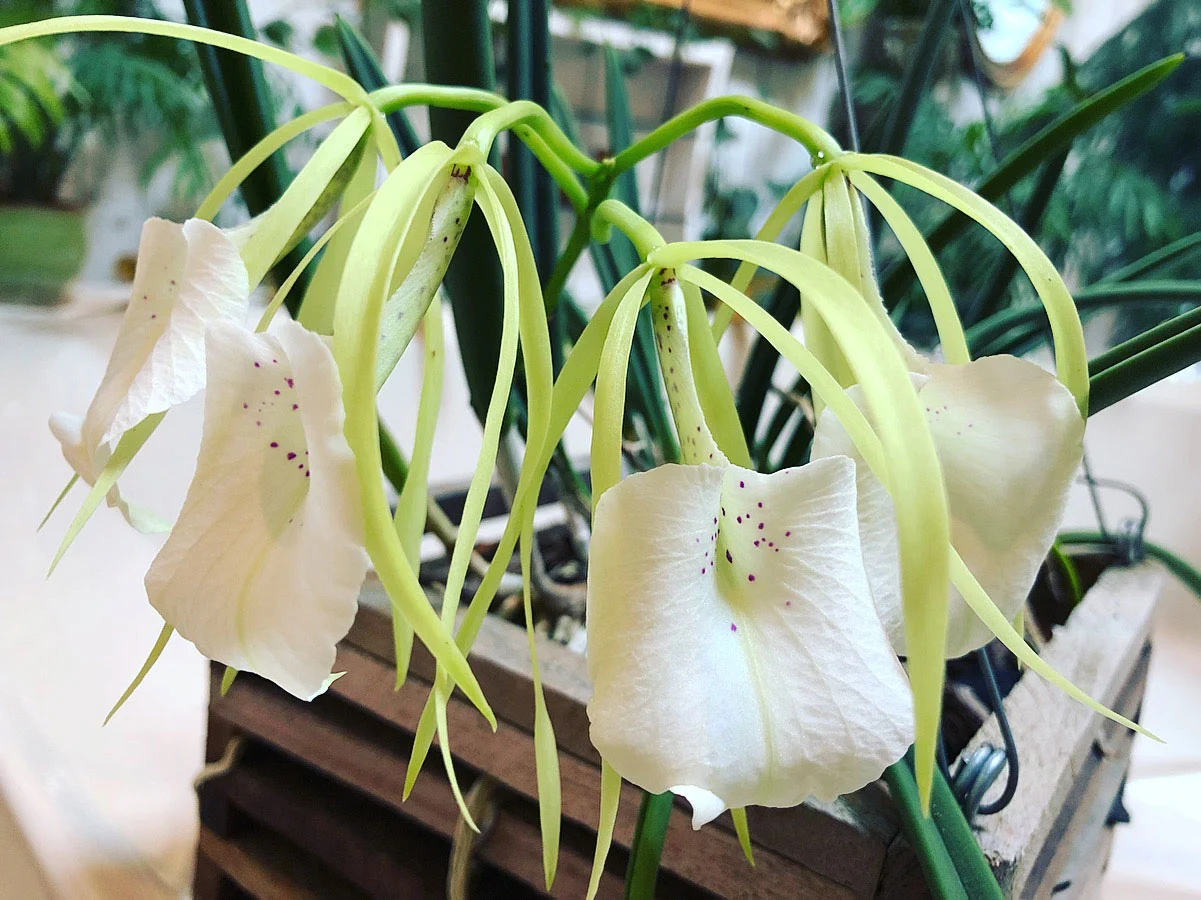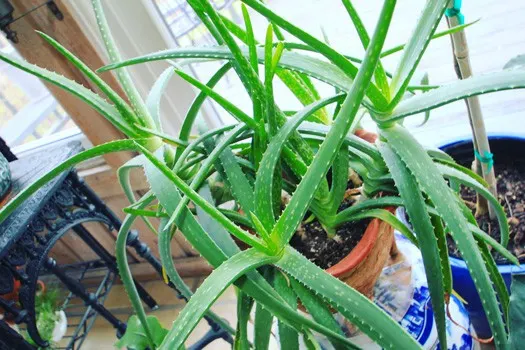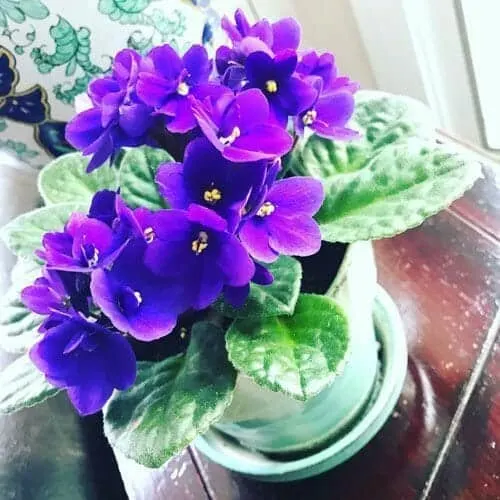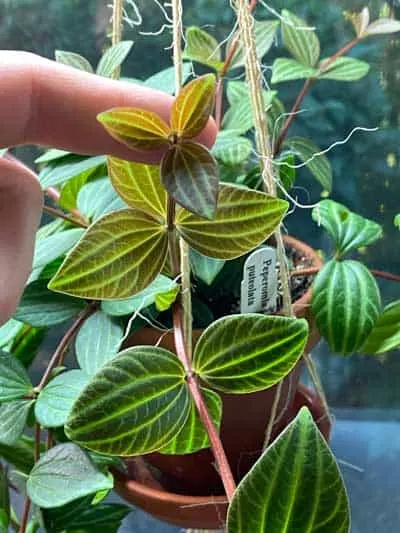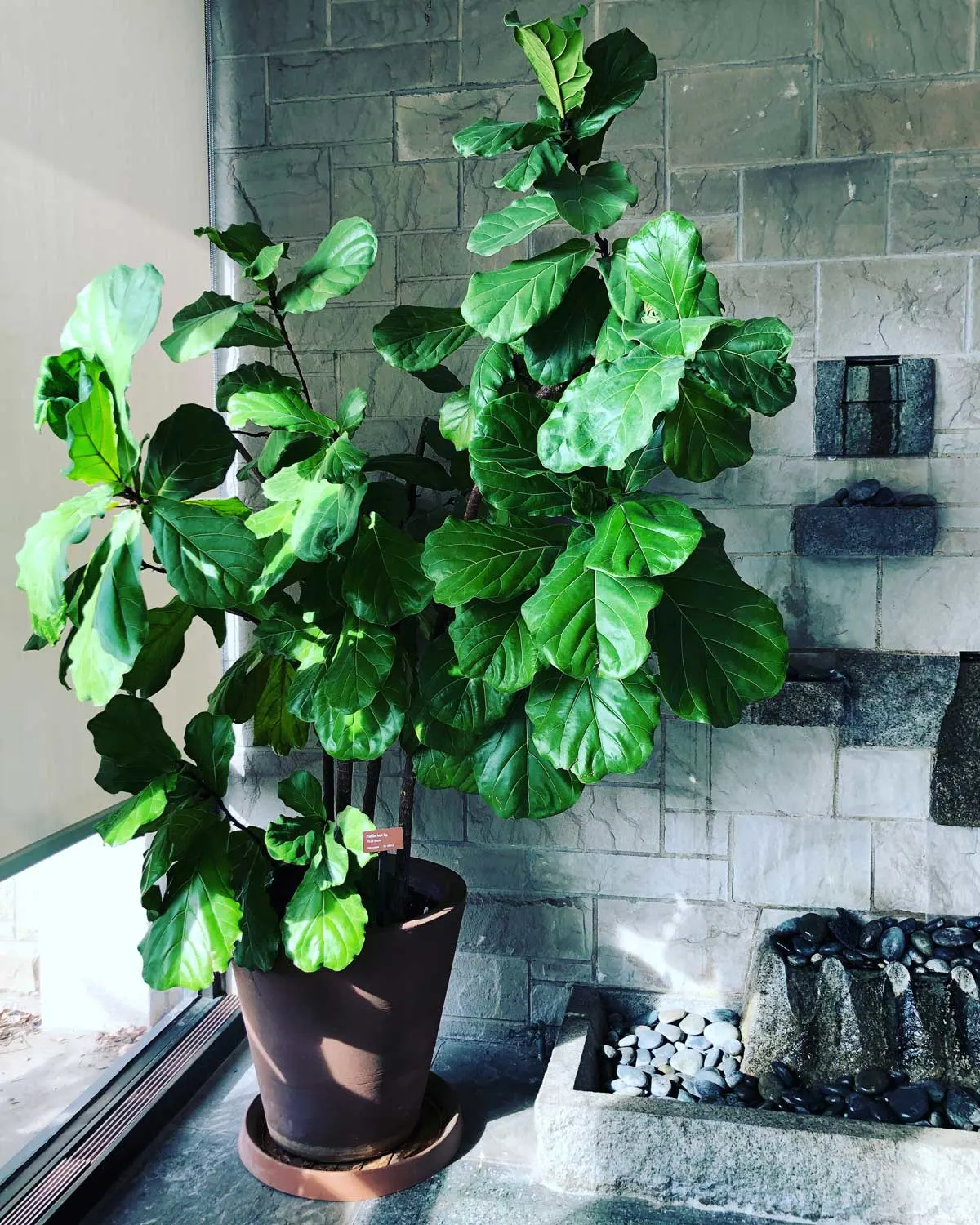Some of the links in this post may be affiliate links.
The appropriate light levels for your houseplants should be the most important consideration when deciding where you place your houseplants indoors. With all the confusion and talk about “bright indirect light”, I will simplify it for you in this post.
Keep reading to learn more about light in your home, as well as some of the best houseplants for east facing windows.
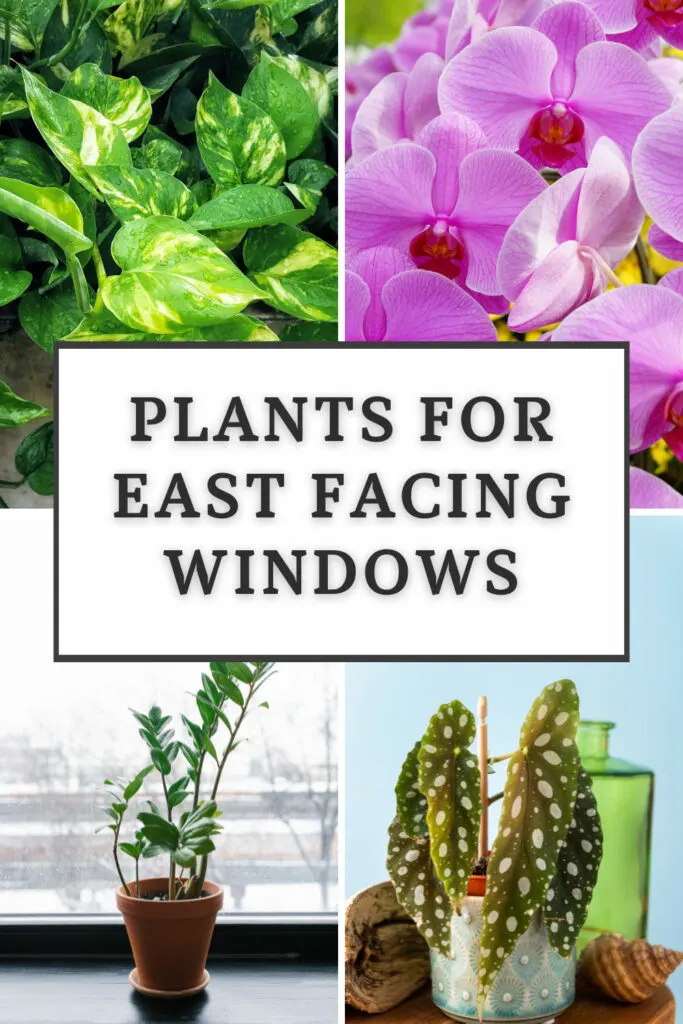
Table of Contents
EAST FACING WINDOW LIGHT
Regardless of where you live in the world, an unobstructed eastern exposure window will provide direct, morning sunlight. In my experience growing houseplants, I like to call this a “catch all” window.
It will contain more than enough light for quite a variety of plants. Even plants touted as needing only “bright indirect light” will do well in these windows. Why? Because when we are talking about light intensity indoors vs outdoors is very different.
Light intensity indoors is much weaker than it is outdoors, so when we see direct sun inside, it means something completely different. Any plant that is labeled as being appropriate for low light conditions will thrive in an Eastern facing window.
Morning sun from an Eastern facing window is also not as intense as sun coming through west-facing windows which receive afternoon sun, but this is not to say that some of the same plants can’t thrive in both.
Here is a selection of some of the best east facing window plants for your home. Please note that many of these plants will also work well in other exposures as well.
These plants are not exclusive to eastern-facing windows, particularly since light varies dramatically given your location and how obstructed your windows are.
HOUSEPLANTS FOR EAST FACING WINDOWS
1. African Violets
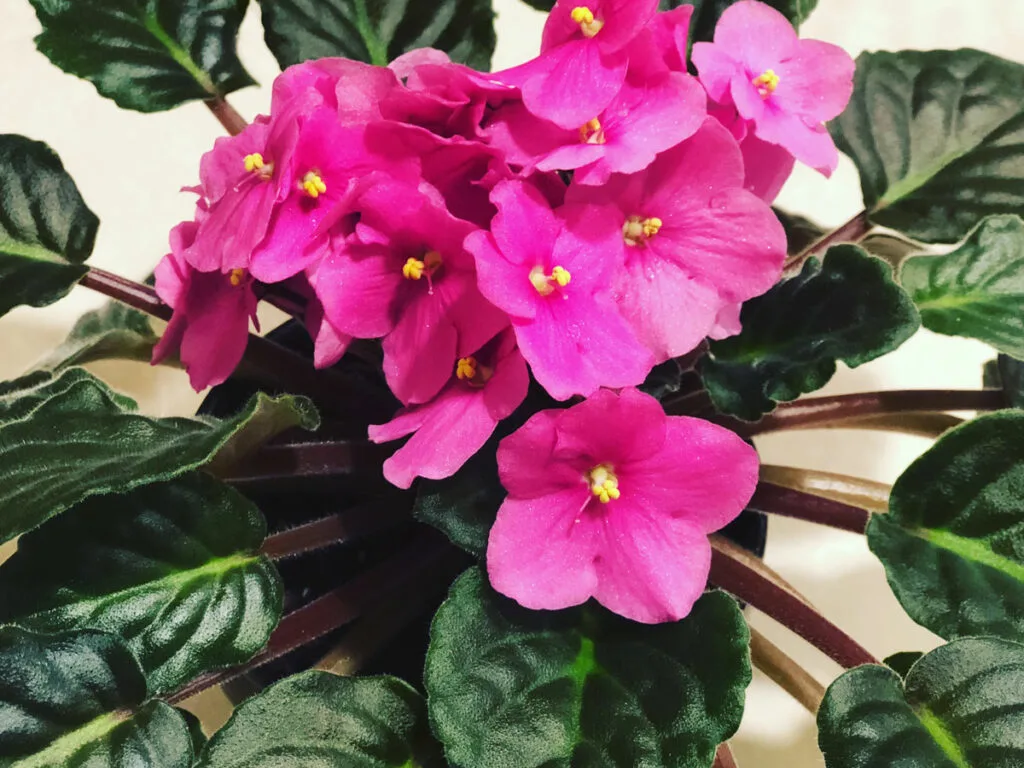
African Violets are one of the best flowering houseplants that you can grow indoors. The flowers come in so many colors and there are even variegated plants with pink or white variegation.
These are not just your grandma’s plants! There are even miniature violets and trailing varieties.
A well-cared-for violet will be in almost constant bloom. Eastern-facing windows will ensure that they will have enough light to flower. Check out my post on African Violet care for growing tips.
2. Air Plants
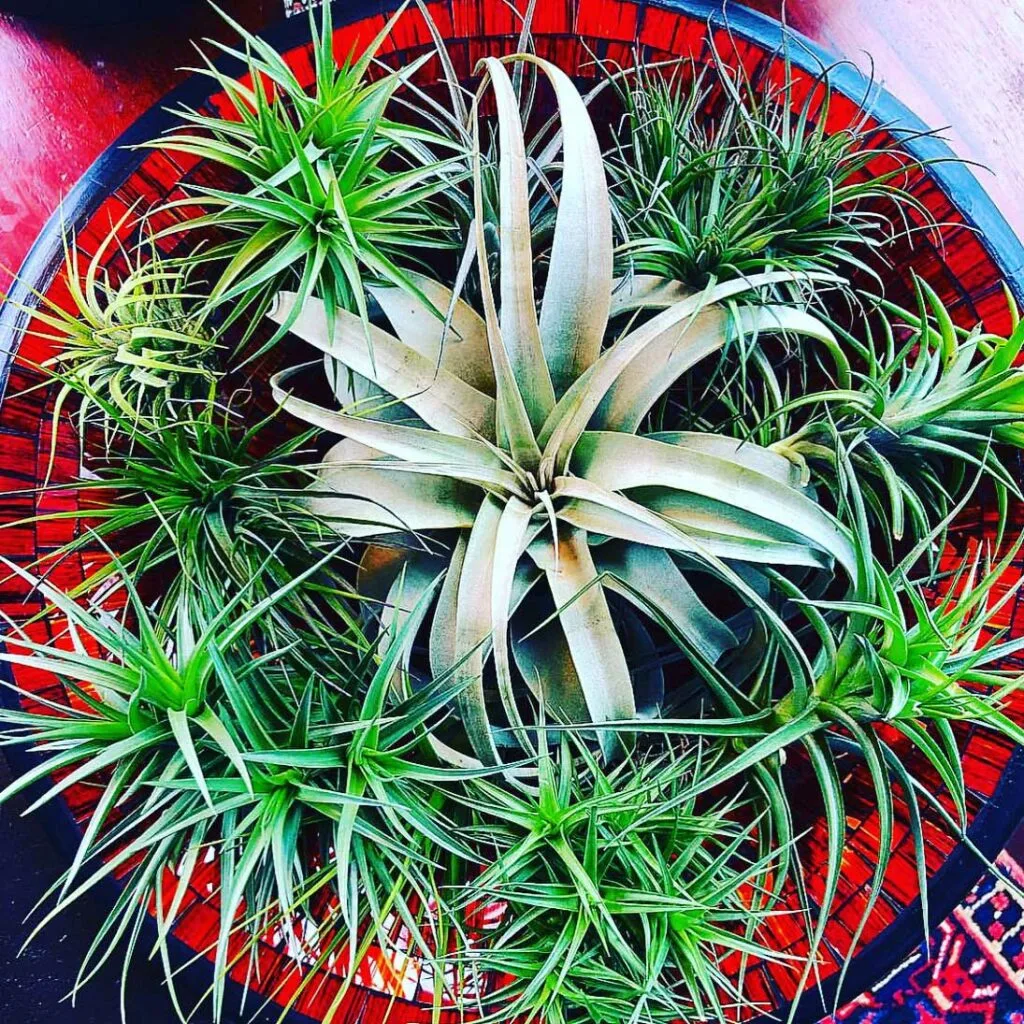
These epiphytes grow on trees and use their roots simply to attach onto their host trees. They derive their moisture needs through their leaves.
Many people fail with air plants because they don’t realize that they need quite a bit of light indoors in order to do well.
Proper watering is also crucial, so don’t miss my Tillandsia care post, as well as browse some easy air plant varieties that you can grow at home.
3. Alocasias
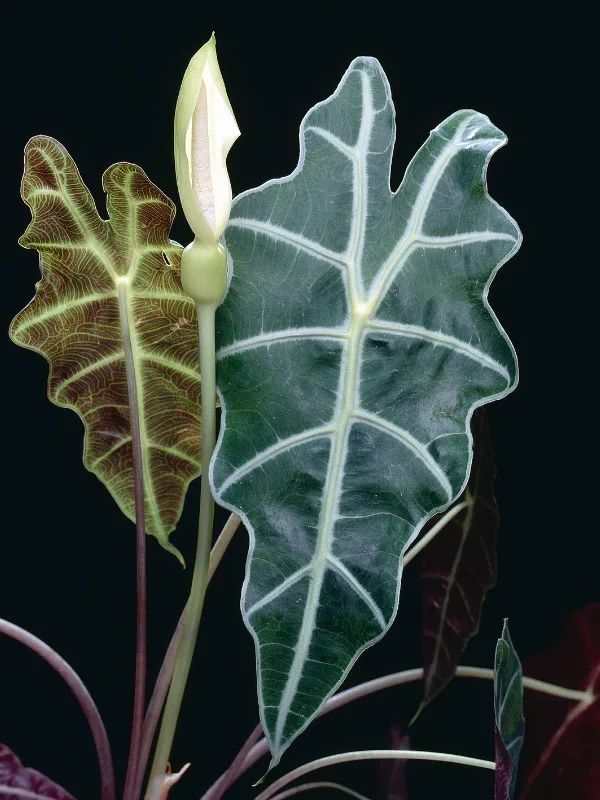
There are few plants that can provide an exotic flair to your home quite like Alocasias. With so many Alocasia types out there, it is easy to see why these plants are so popular.
They are notoriously prone to spider mites though, so keep a watchful eye.
4. Arrowhead Vine
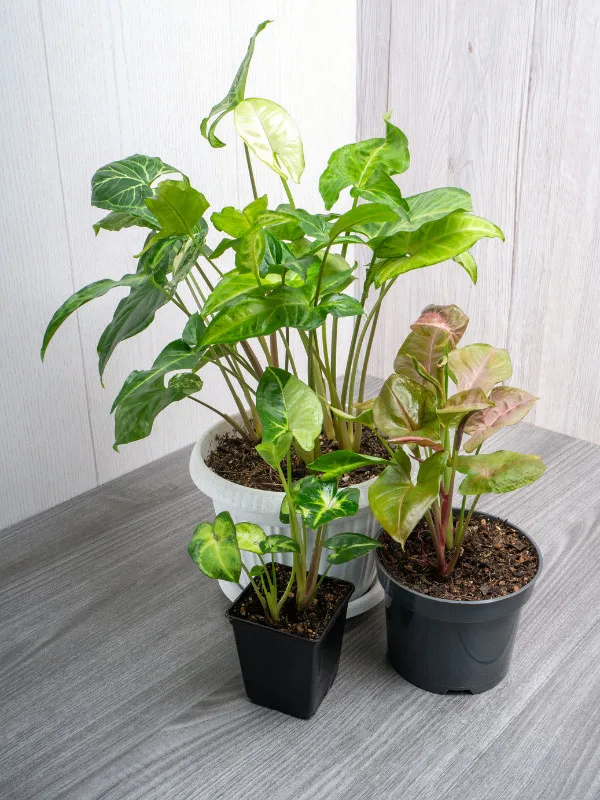
Syngonium plants, commonly known as arrowhead vine, are fun plants to grow indoors. With so many Syngonium varieties, you can easily choose a favorite. There are even pink arrowhead plants.
Syngonium care and propagation is also very easy.
5. Begonias
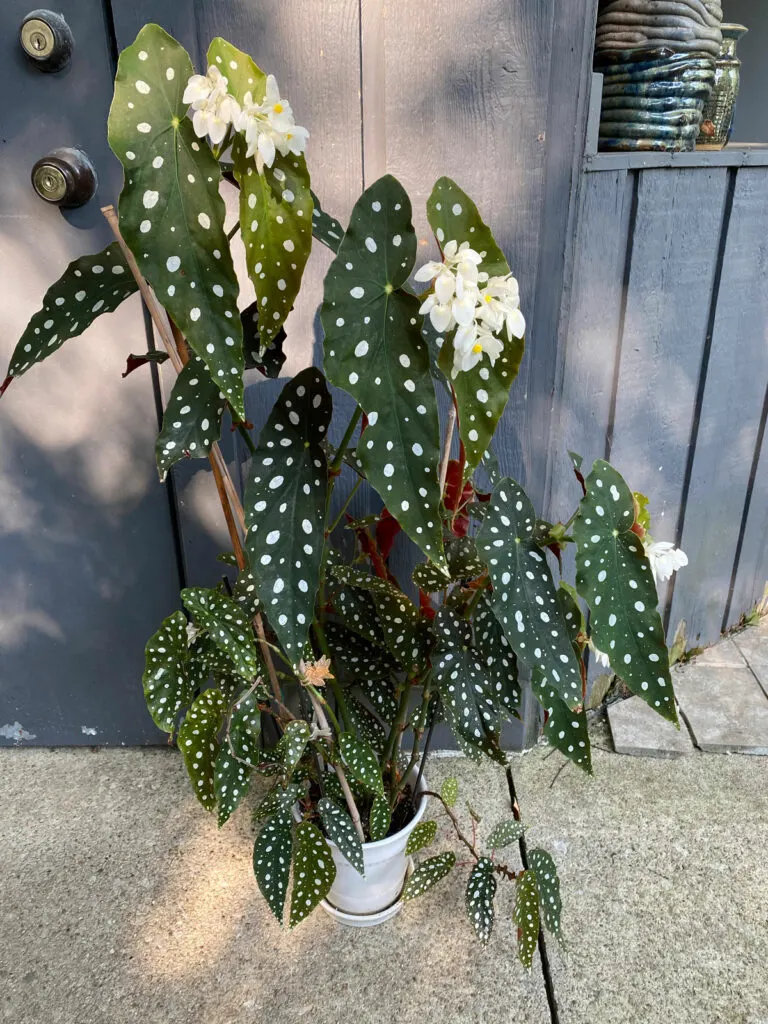
With so many begonia types that you can grow indoors, you will surely find a few that you’d like to grow. Few plants beat the foliage of begonias.
One of the more popular begonias is Begonia maculata with its characteristic polka dot pattern on the leaves.
6. Boston Fern
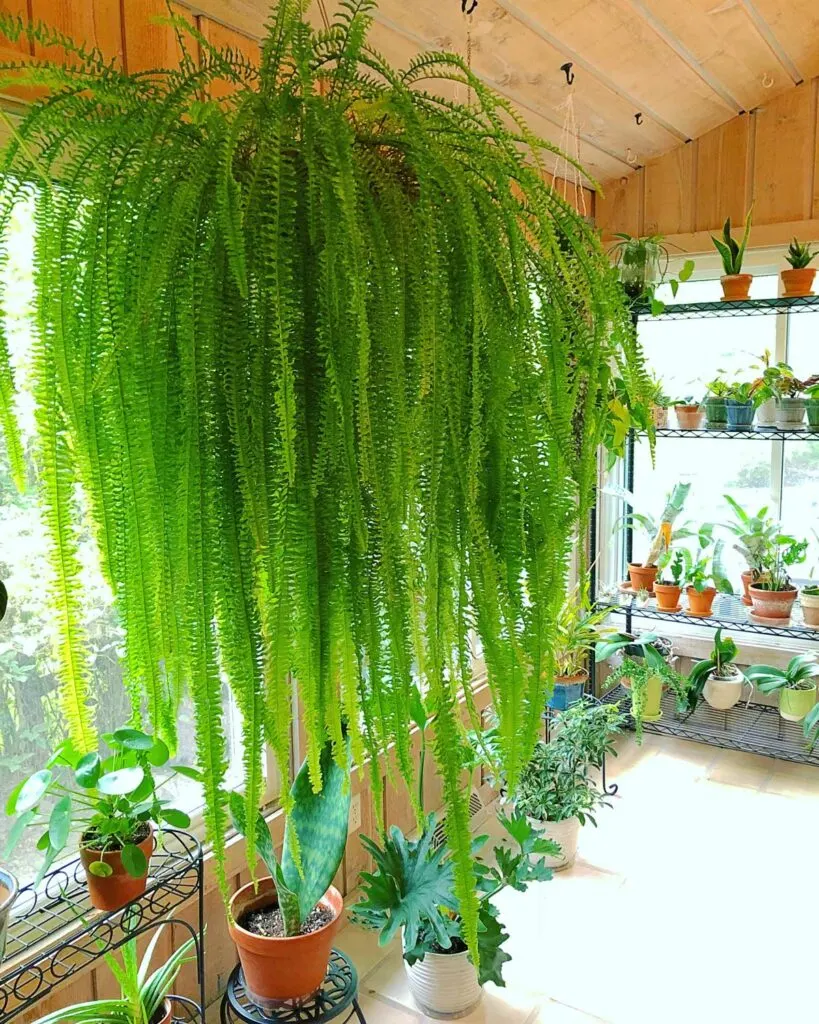
Even indoor ferns can benefit from some direct sun indoors, and boston ferns are no exception.
The main thing with ferns is to keep them very well watered. They detest drying out, so water as soon as the surface of the soil feels dry.
7. Chinese Evergreen
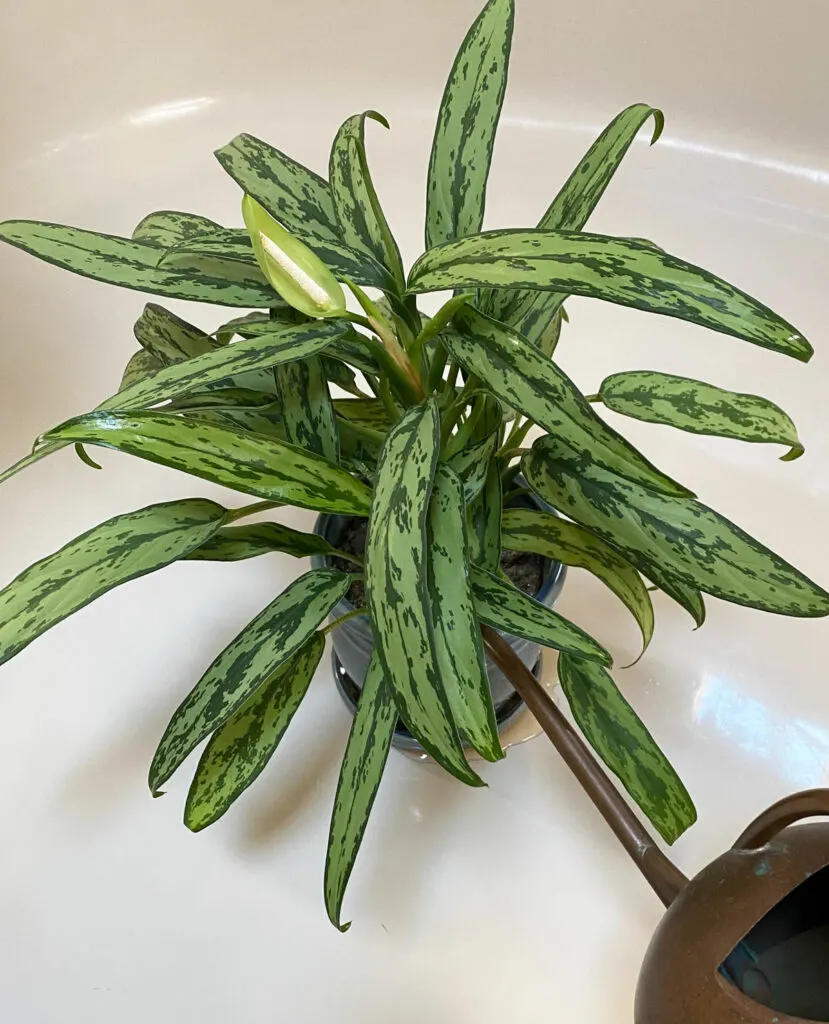
Aglaonema plants, commonly known as Chinese Evergreen, are staples in any houseplant collection. The foliage patterns and colors are irresistible and Chinese evergreen care and propagation is also a cinch.
8. Hoyas
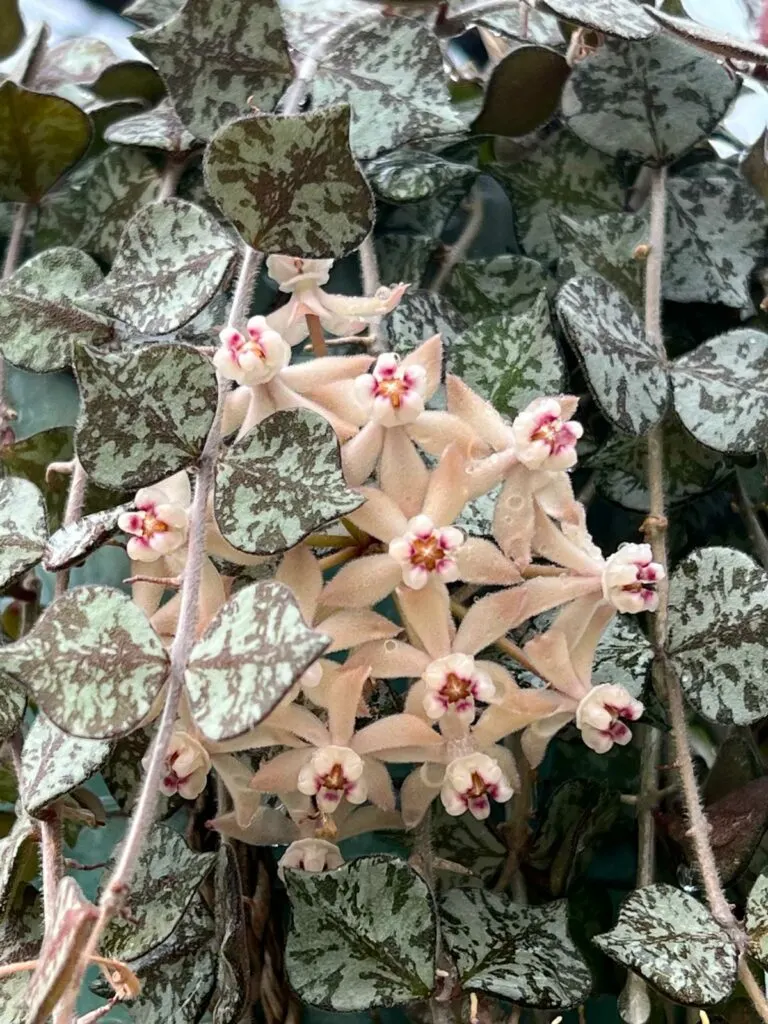
You can get the best of both worlds with Hoyas. Not only do they have gorgeous foliage, but they also produce beautiful umbels of fragrant flowers.
Check out some beautiful varieties of Hoyas that you can grow at home, as well as tips on getting Hoyas to bloom.
9. Jade Plants
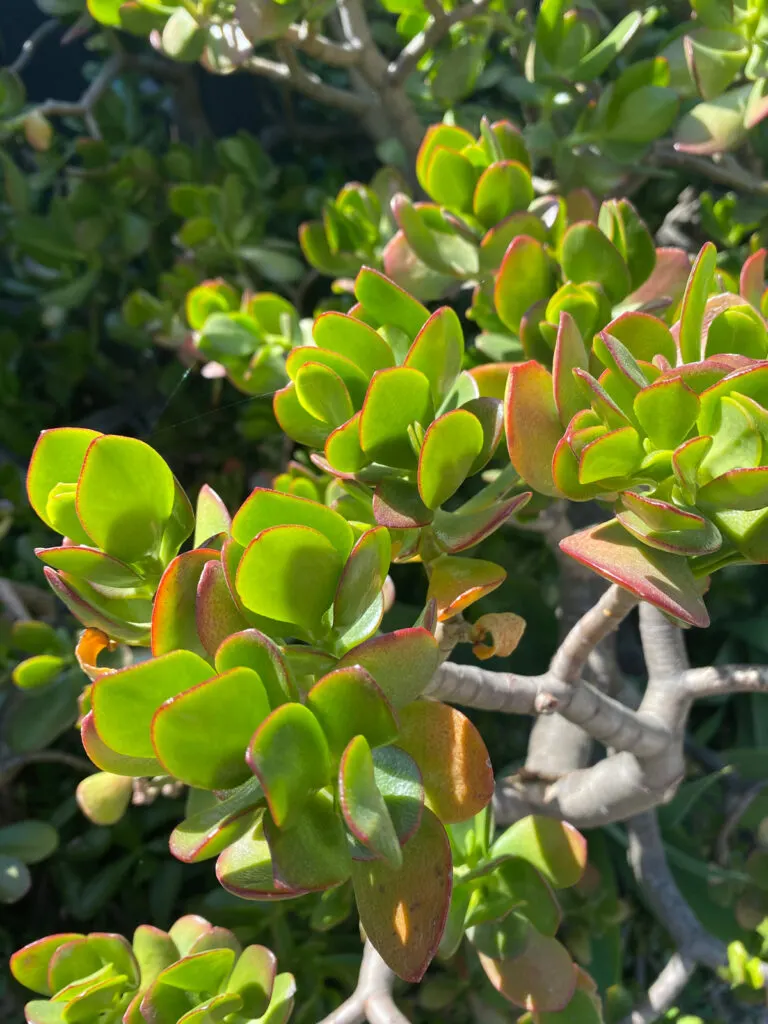
No houseplant collection is complete without a jade plant. Although these can be grown in windows with no direct sun, they’re best if they get at least some sun, which is why I recommend growing them in at least an Eastern facing window.
Check out my blog post on jade plant care, along with how to make a jade plant bushy and how to propagate jade plants with only leaves!
10. Prayer Plant
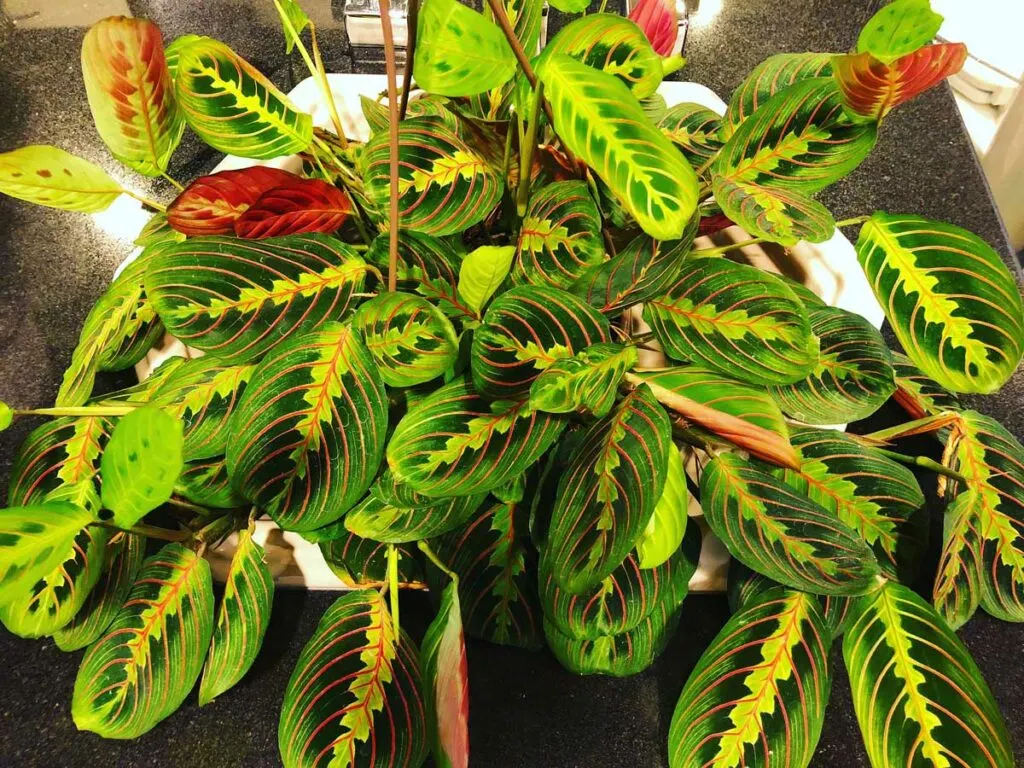
Prayer plants generally refer to plants in the Maranta genus. They are called prayer plants because the leaves fold up at night like they are “praying” and then relax back down during daylight.
These are moisture loving plants and if you let them dry out too much, they will experience curling and browning of leaves.
11. Snake Plants
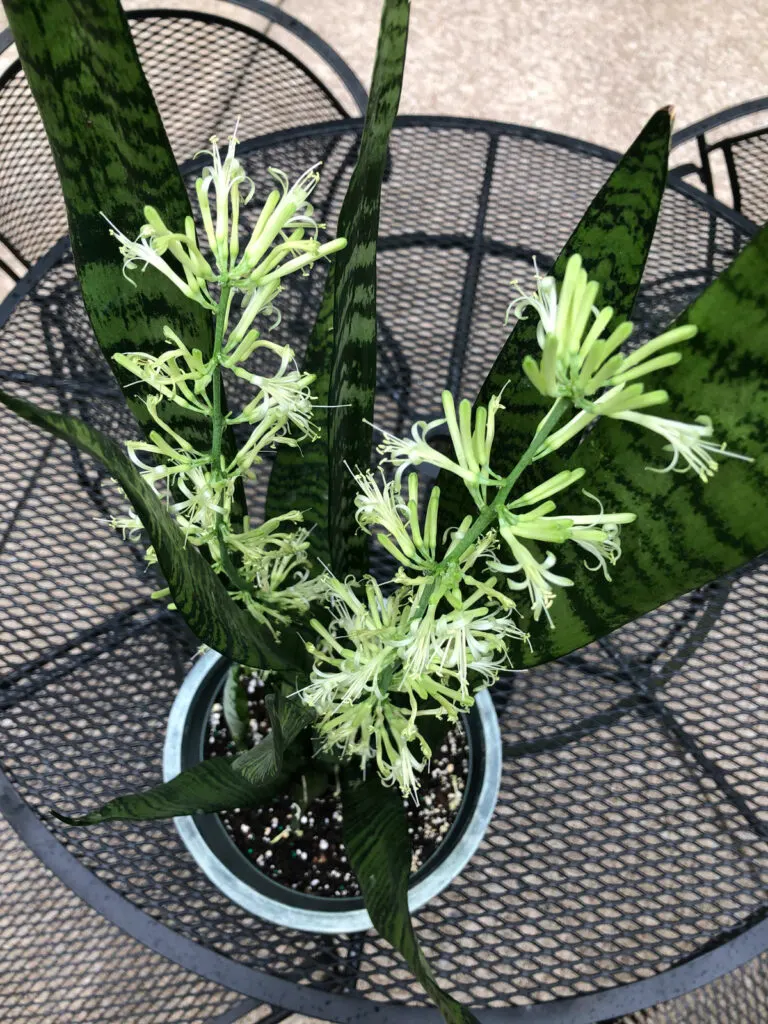
Snake plants, also known as mother-in-law’s tongue, are a staple in any houseplant collection. With so many Sansevieria varieties, there is no shortage to choose from.
They are also super fun to propagate in water and are very easy-care in general.
Many people are disappointed with their snake plant growth, and the reason is that they’re not getting enough light. These plants can even grow in your sunniest window indoors, so don’t be shy with giving them some direct sun.
12. Moth Orchid
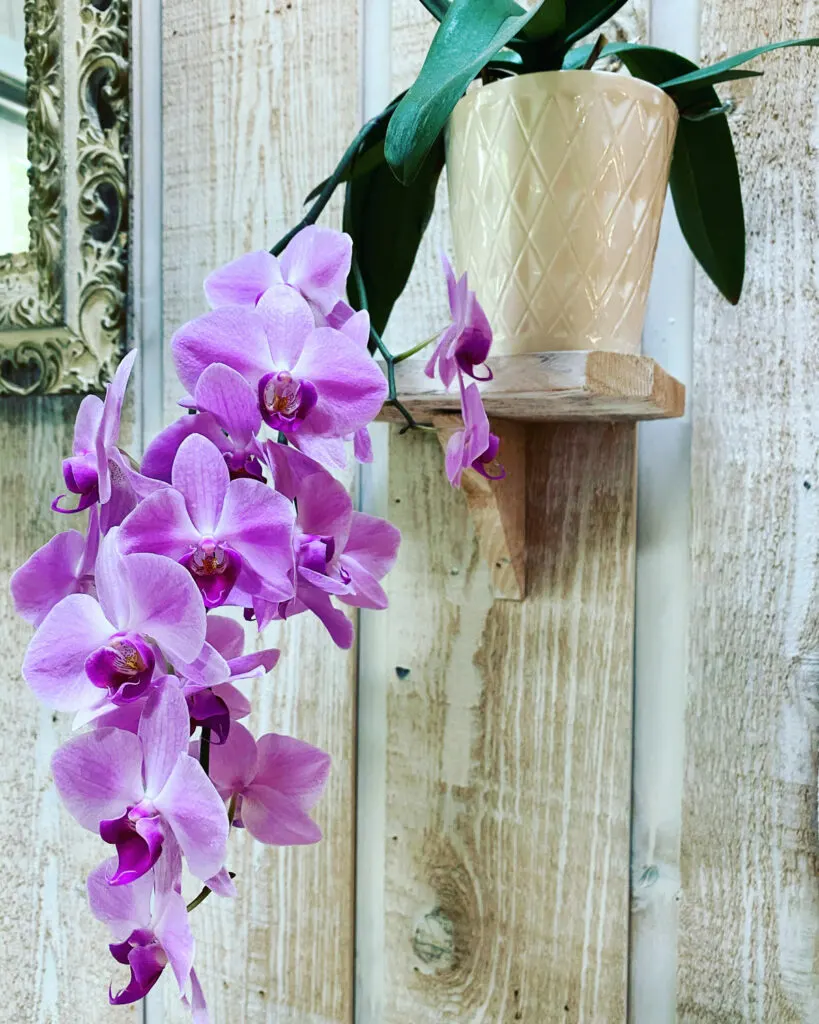
Moth orchids produce perhaps the longest lasting flowers of any plant that you can grow indoors. You can easily have your Phalaenopsis, or moth orchid, in bloom for months at a time.
I do not recommend watering orchids with ice. Instead, check out my blog post on the proper way to water orchids for long term success.
Eastern facing windows will give gentle morning sun and plenty of light for these plants to bloom easily indoors.
13. Goldfish Plant
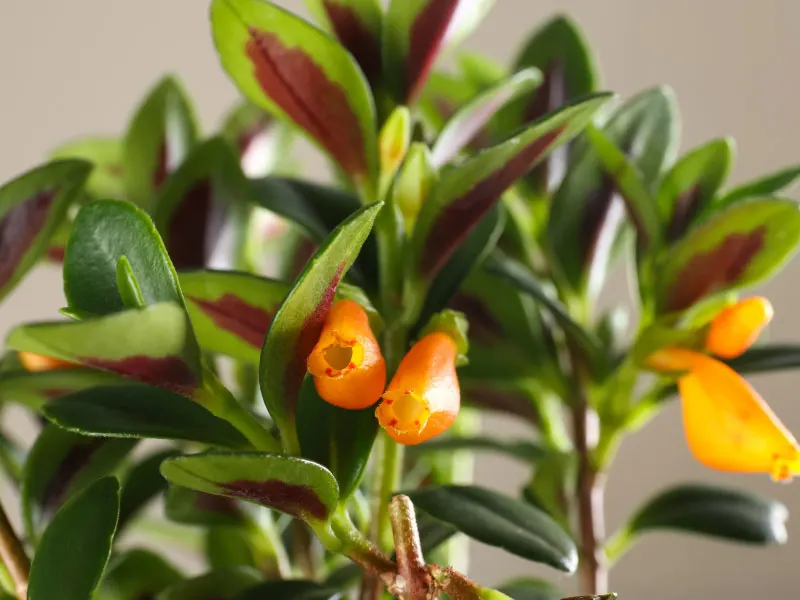
Goldfish plants are a delight with their small, glossy foliage and orange flowers. The stems will trail a few feet long and a well-grown plant is truly a sight to behold!
An eastern-facing window will give your plant enough light for good growth and flowering.
14. Umbrella Tree
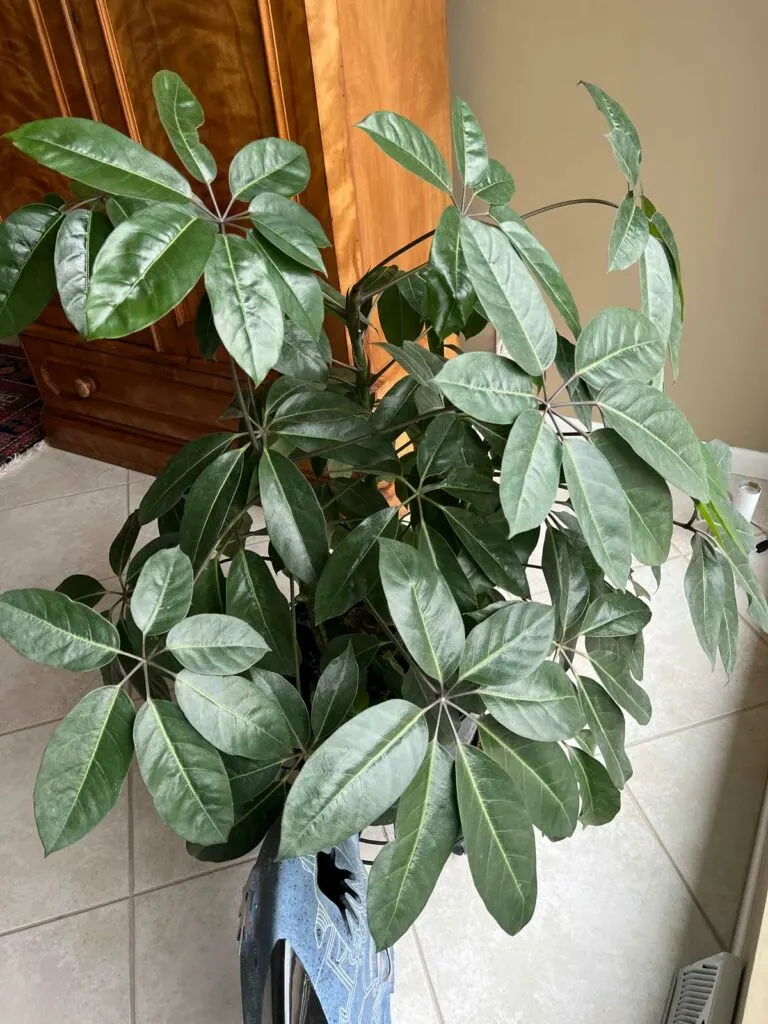
If you’re looking for a nice tall plant for your Eastern windows, Schefflera, commonly known as Umbrella Plant, is a great choice.
Schefflera actinophylla is the larger leaved plant which grows very tall, while Schefflera arboricola is the smaller leaved species and generally stays a little smaller.
15. Calathea
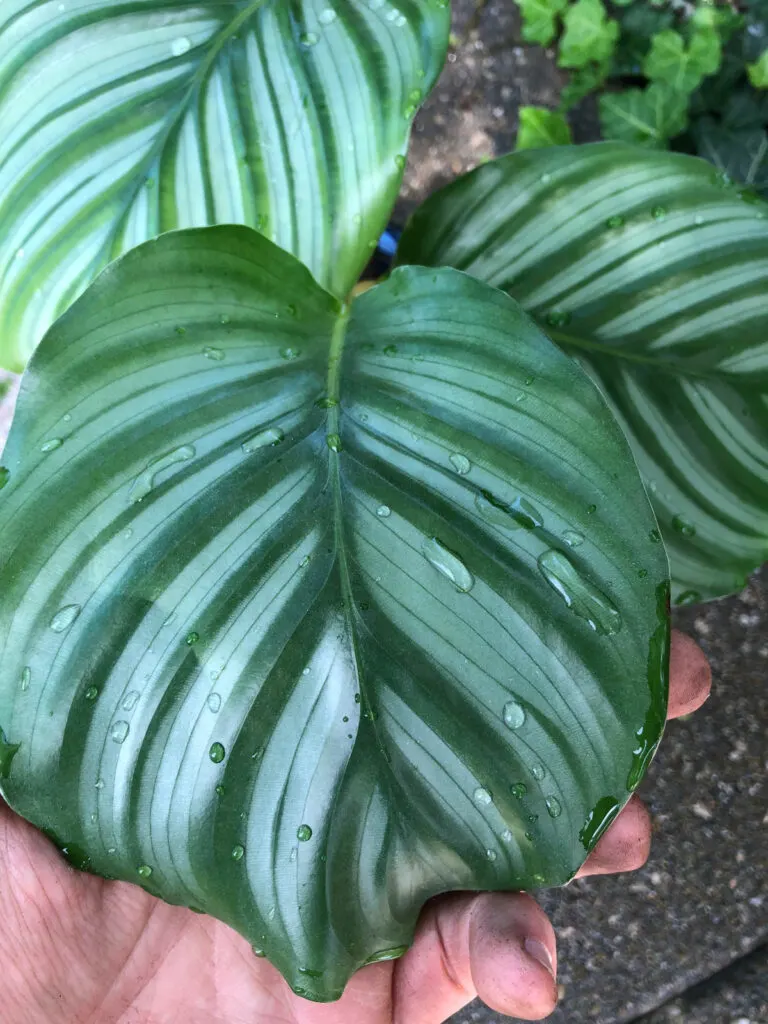
Calathea plants really put on a show with their stunning foliage patterns. They can be tricky to grow indoors and are very picky with soil moisture and water quality.
Check out how I recommend watering Calathea plants, as well as how to minimize brown, crispy leaves in Calathea.
Check out the beautiful varieties of Calatheas that you can attempt to grow at home.
16. Monstera Deliciosa
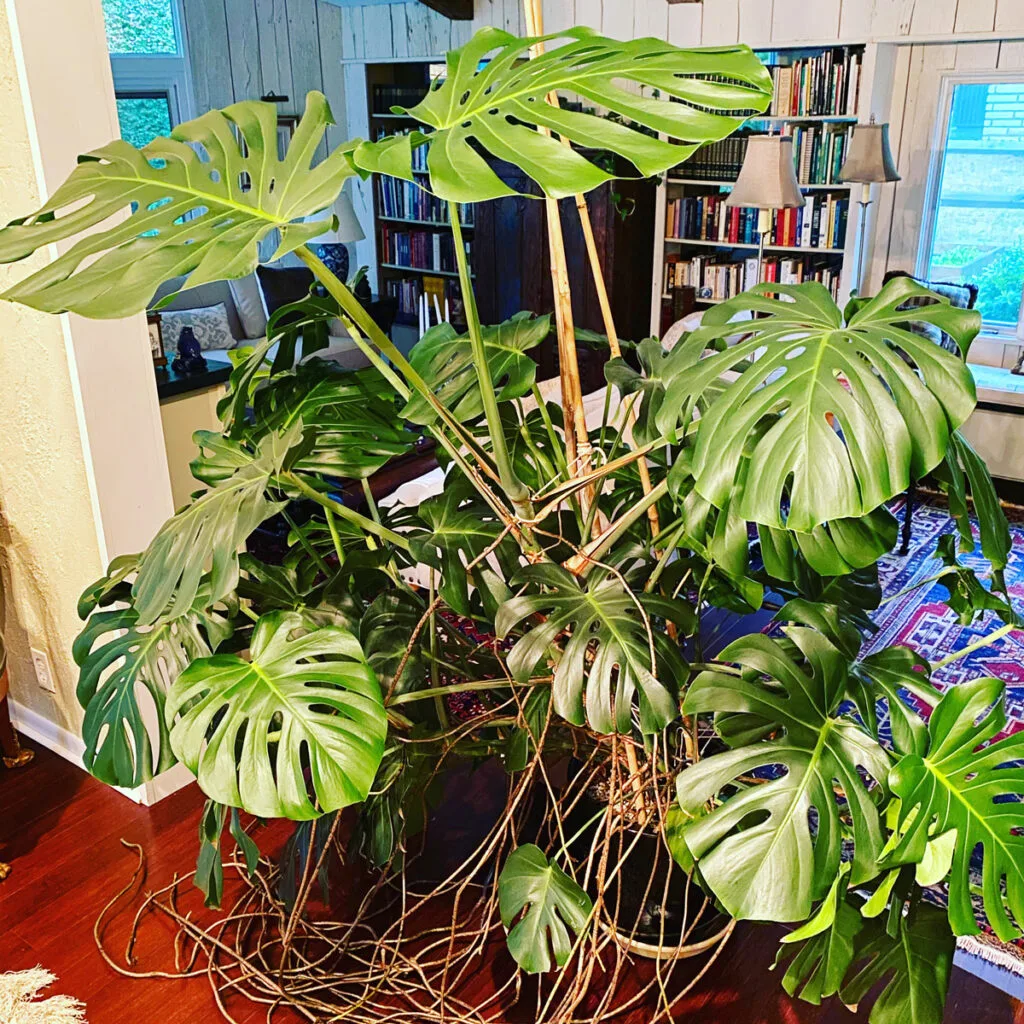
This is the plant that took the world by storm. There must be a Monstera deliciosa in every houseplant enthusiast’s collection.
This is a climbing plant that gets very large, so make sure that you have the room! Don’t miss my post on Monstera deliciosa care.
17. Peace Lilies
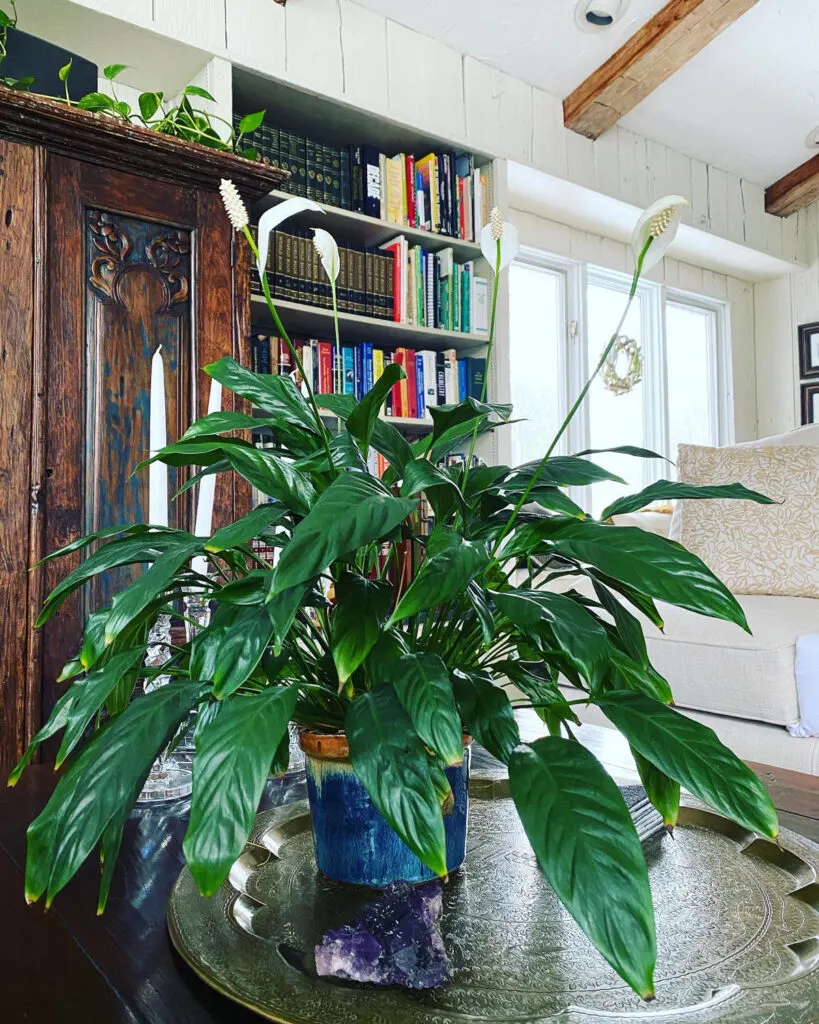
This plant is found in virtually every houseplant collection. When placed in good light, they will reward you with flowers.
Have you been struggling with your peace lily? Check out my post on how to revive your dying peace lily.
18. Fiddle Leaf Fig
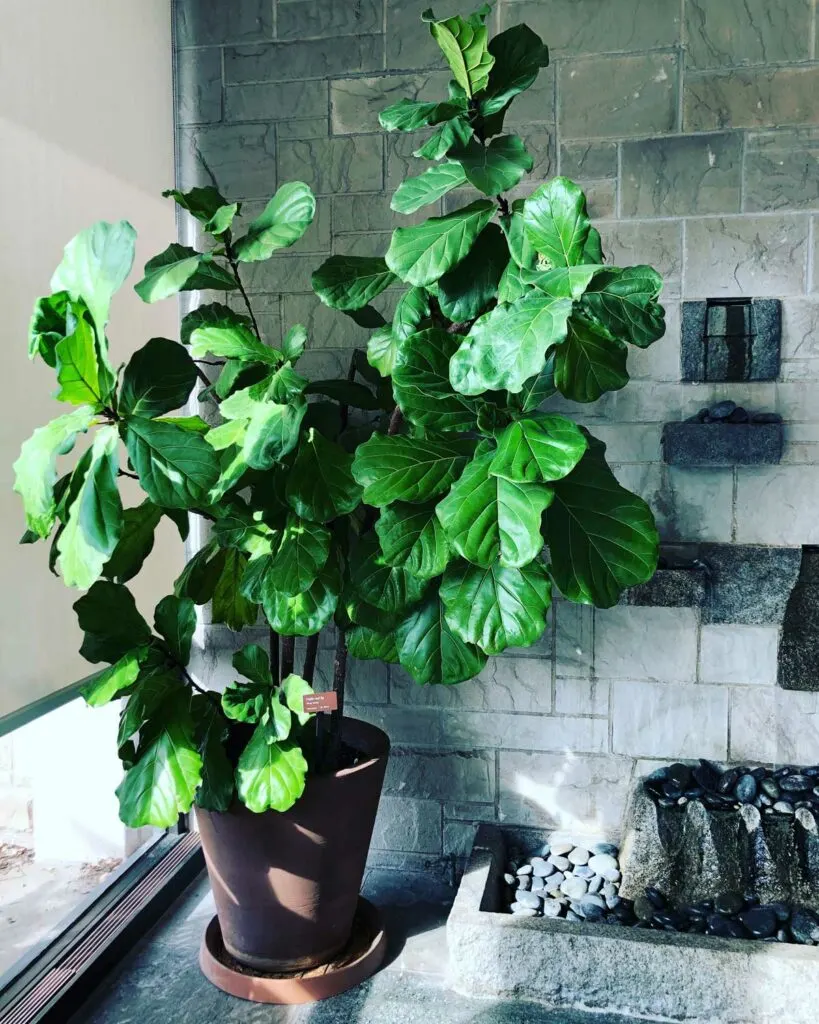
One of the most abused and misunderstood houseplants, Fiddle Leaf Figs (Ficus lyrata) are enormously popular.
Check out my fiddle leaf fig care post, along with my post on propagating fiddle leaf fig in water. With good growing conditions, they can be very easy to grow!
19. Heartleaf Philodendron
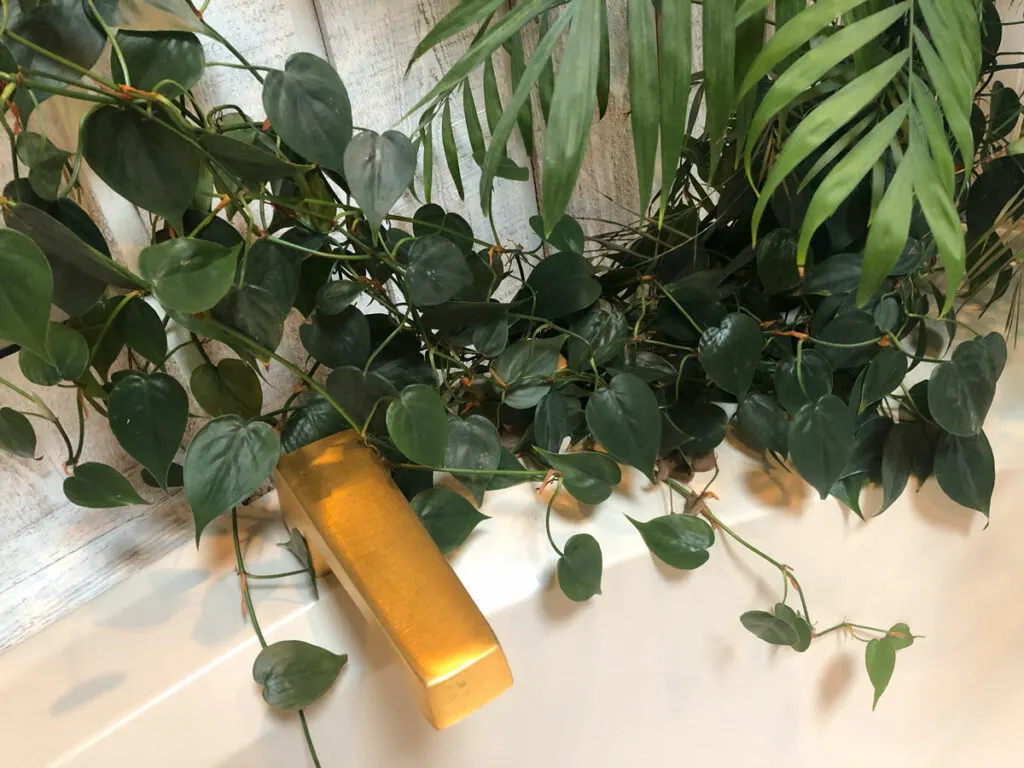
Possibly the easiest Philodendron that you can grow indoors, Heart Leaf Philodendron is a beautiful vining plant that is also a cinch to propagate.
Check out my Heart Leaf Philodendron care post for more details.
20. Parlor Palm
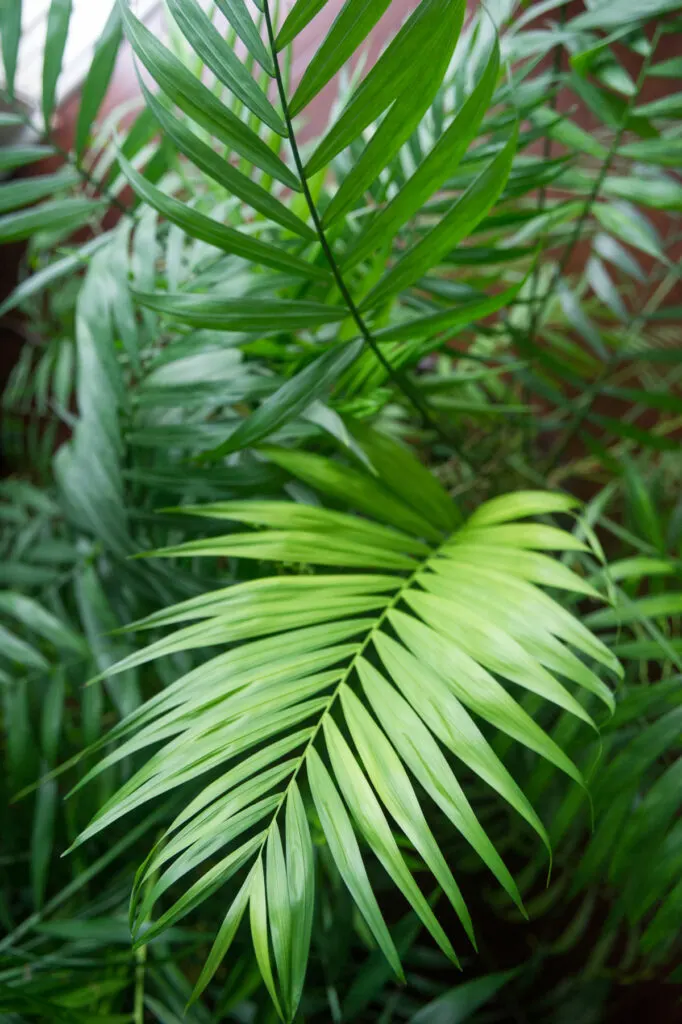
If you don’t have the room for larger palms, the parlor palm is a great option. It stays manageable in size and is easy to grow.
Parlor Palm care is pretty simple, but some of the common problems that you may encounter are spider mites and brown tips on the leaves.
21. Dumb Cane
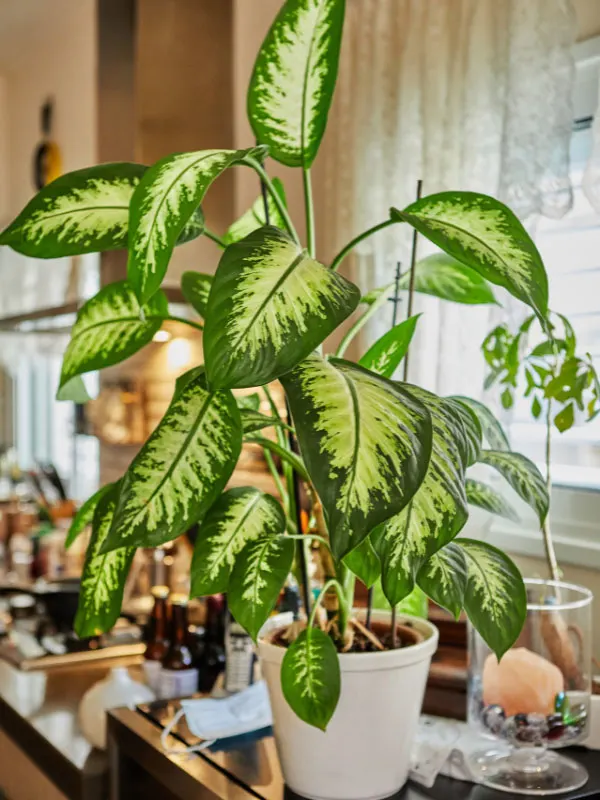
Dieffenbachia, commonly known as dumb cane, gets its name from because it can temporarily cause speechlessness if you chew on the plant.
Some varieties are shorter, and there is also a large leaf variety that will reach your ceiling in no time.
22. Areca Palm
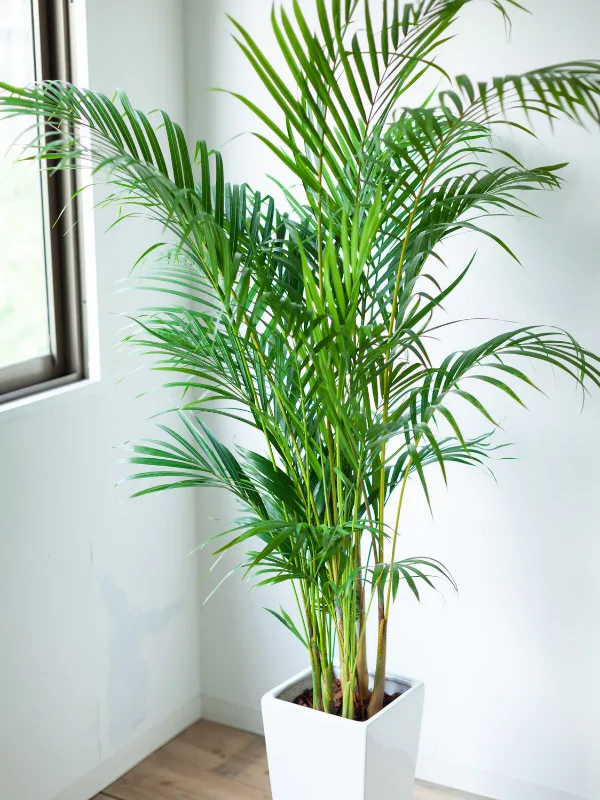
Areca palms also go by the common name Butterfly Palm, and make for an elegant indoor plant. Relatively easy to care for, like any indoor palm, they can be prone to spider mites and brown leaf tips.
23. Scindapsus
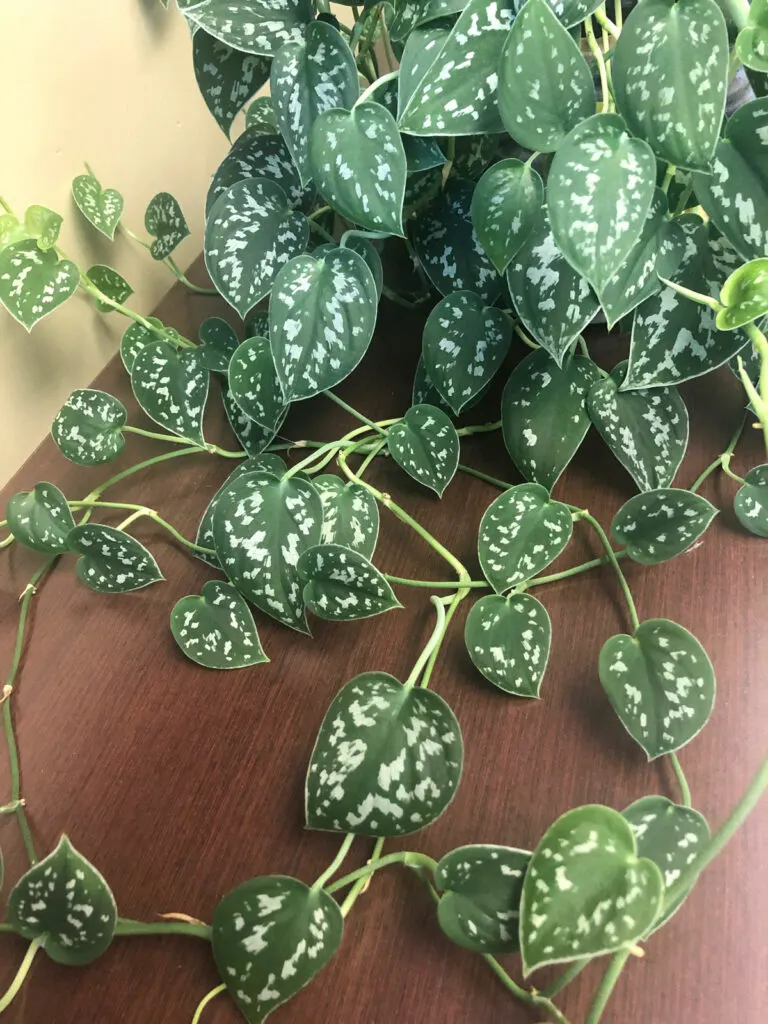
Often called Silver Pothos or Silver Philodendron, these belong to a different genus, Scindapsus. But they are as easy to grow as most Pothos and Philodendron plants.
Don’t miss my blog post on how to grow Scindapsus pictus.
24. Spider Plants
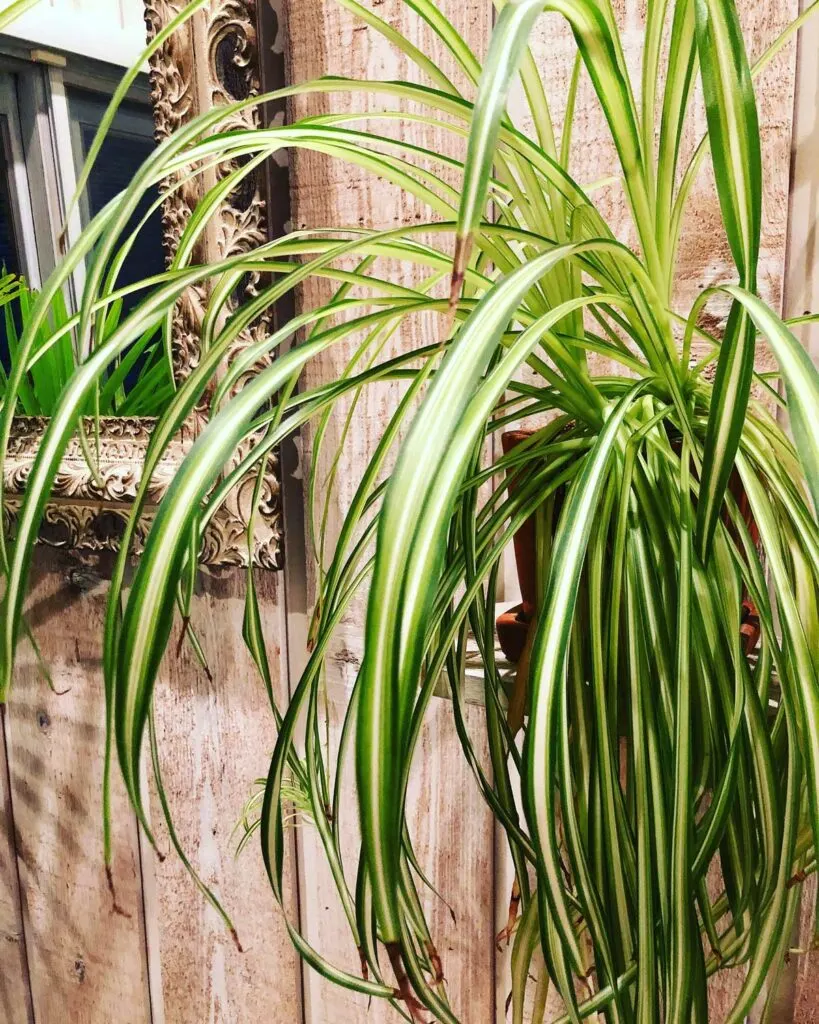
Spider plants are a delight to grow. With their fast growth rate and ease of propagation, you will have an endless supply of plants.
You can even grow spider plants in water, or if you grow them in soil, check out my post on how often to water your spider plant.
25. Oxalis Triangularis
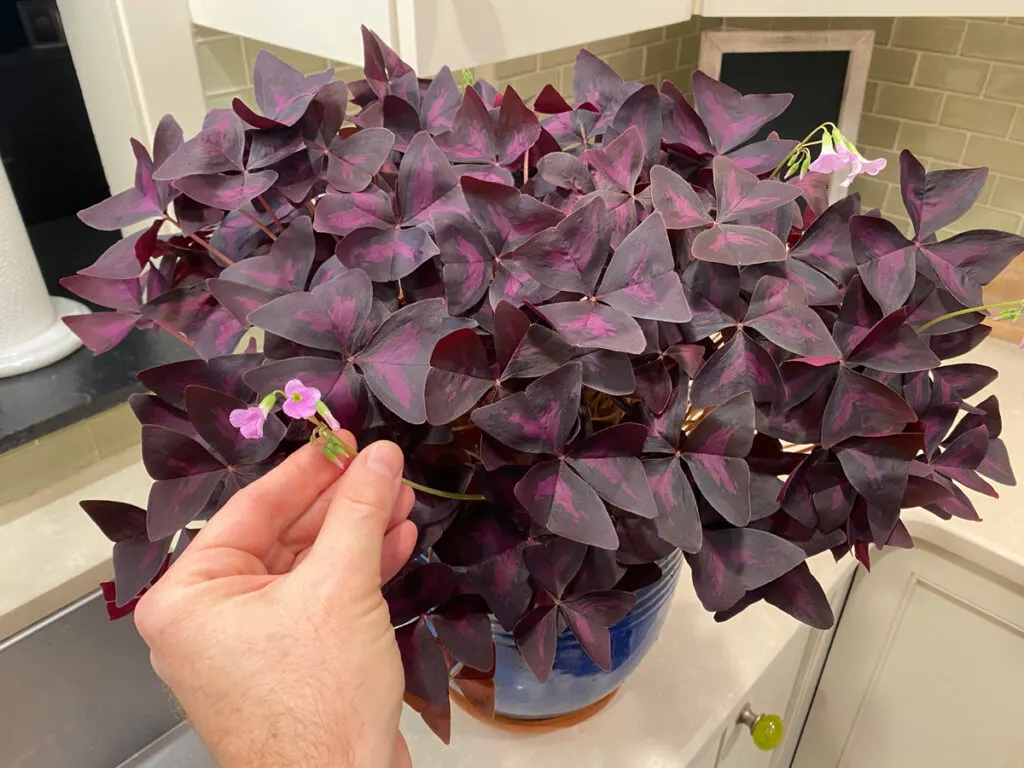
Oxalis triangularis, commonly known as purple shamrock plant, is truly a unique plant. You can plant your own Oxalis corms, or buy a plant already growing in a pot.
Check out my Oxalis triangularis care post to learn all about how to grow this beautiful plant.
26. Rubber Plants
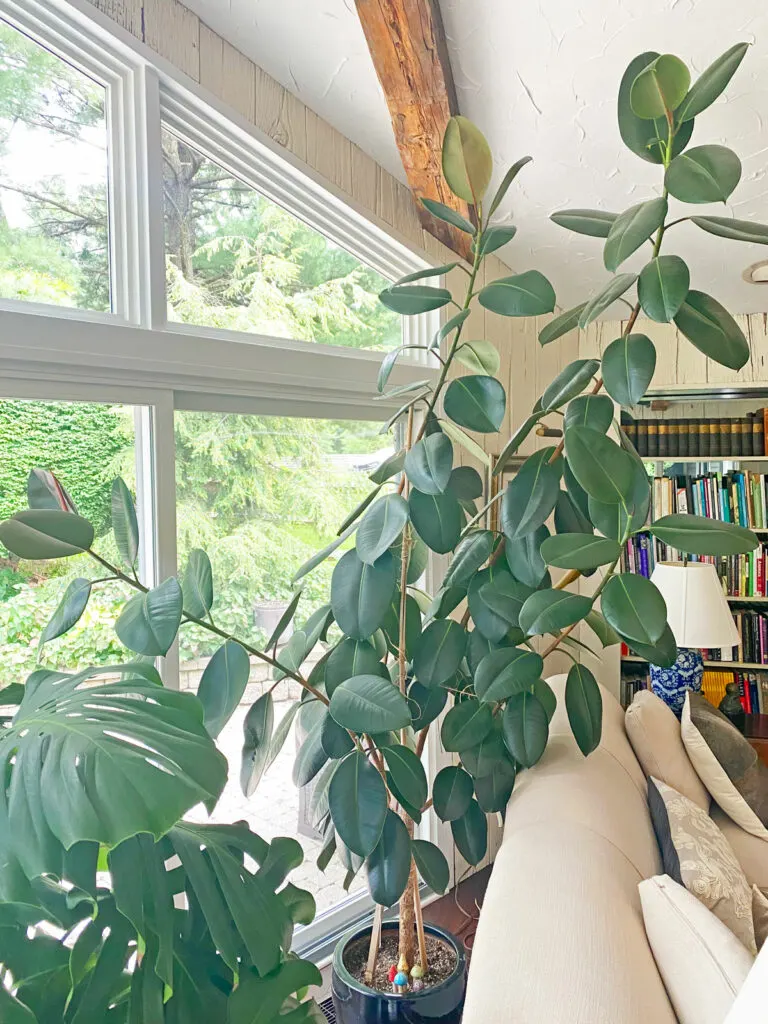
With so many rubber plant varieties out there, you’re not just limited to the plain green rubber plant that we’re used to seeing everywhere.
This plant is often poorly grown due to a lack of light. If given at least some morning sun, your plant will thank you. Check out my rubber plant care post for more details.
If your rubber plant has only one stem, read about how you can make your rubber plant bushy.
27. Pilea peperomioides
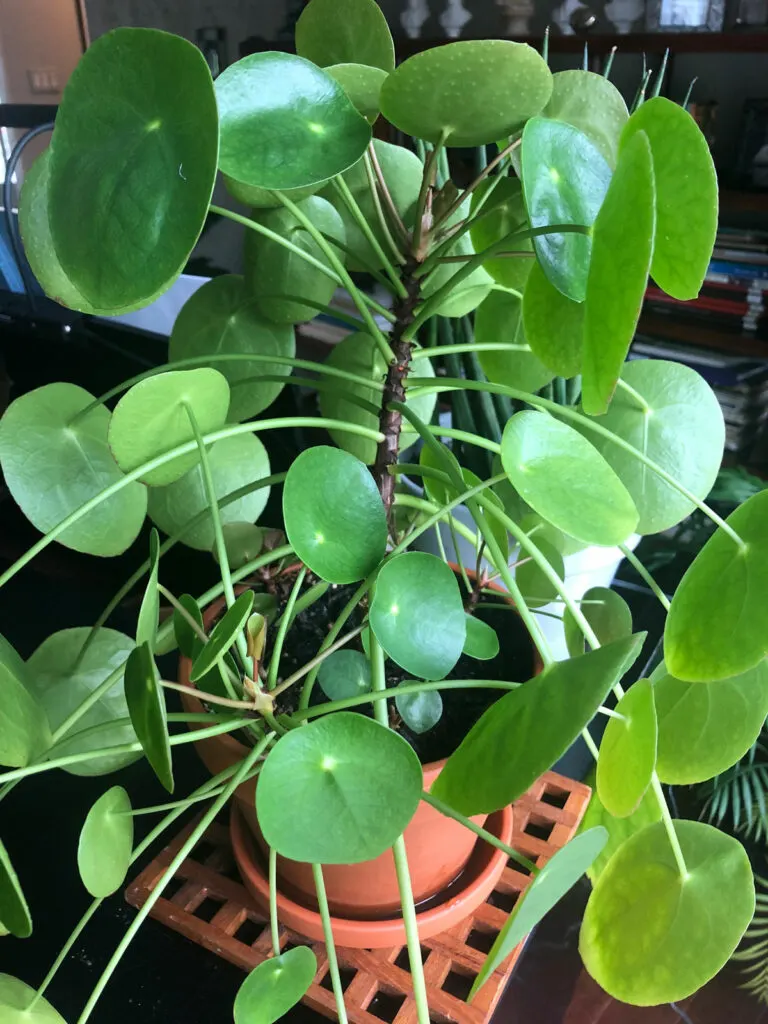
Pilea peperomioides, commonly known as the Chinese Money Plant, is a joy to grow and propagate.
Don’t miss my Pilea peperomioides care post, as well as how to propagate Pilea and encourage pups to grow.
28. ZZ Plant
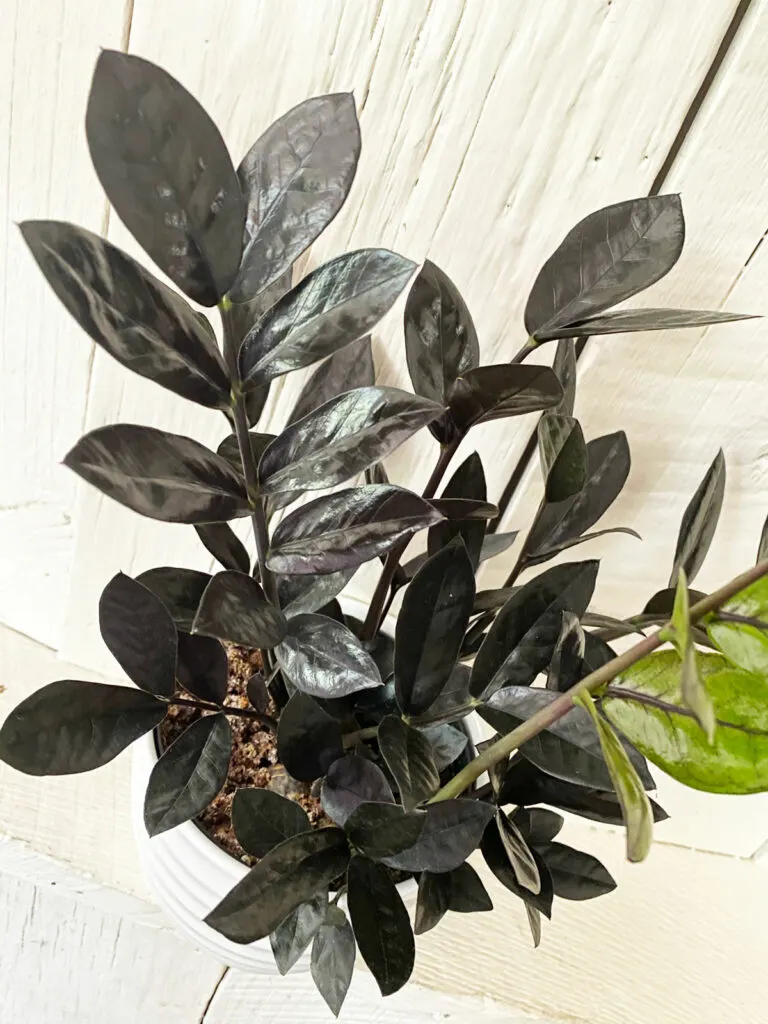
ZZ plants aren’t limited to just the plain green variety that you see everywhere. There are an increasing number of ZZ plant varieties, including variegated versions as well as near-black foliage such as that of ZZ Raven.
Check out my ZZ plant care post as well as how you can propagate ZZ plants from leaflets.
29. Ponytail Palm
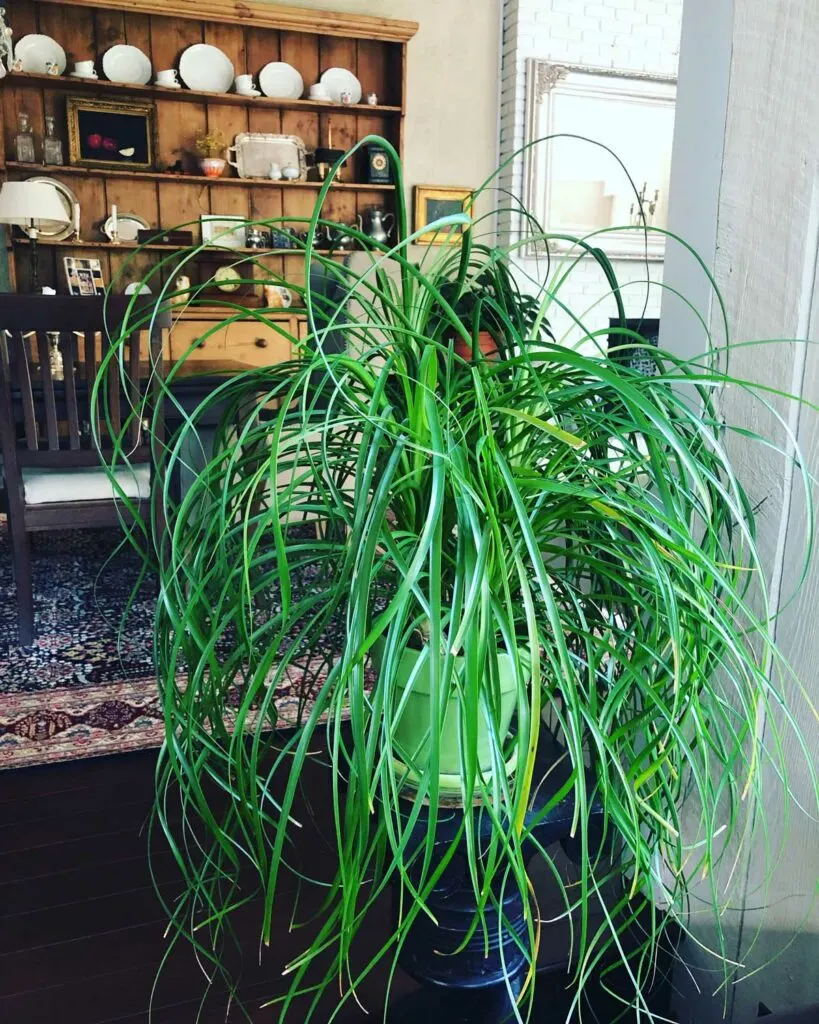
Despite its common name, the Ponytail Palm is not a palm at all, but rather, is succulent. This is a very long lived plant, and with good care, will become an heirloom plant.
Check out my ponytail palm care post as well as how to repot ponytail palm.
30. Pothos
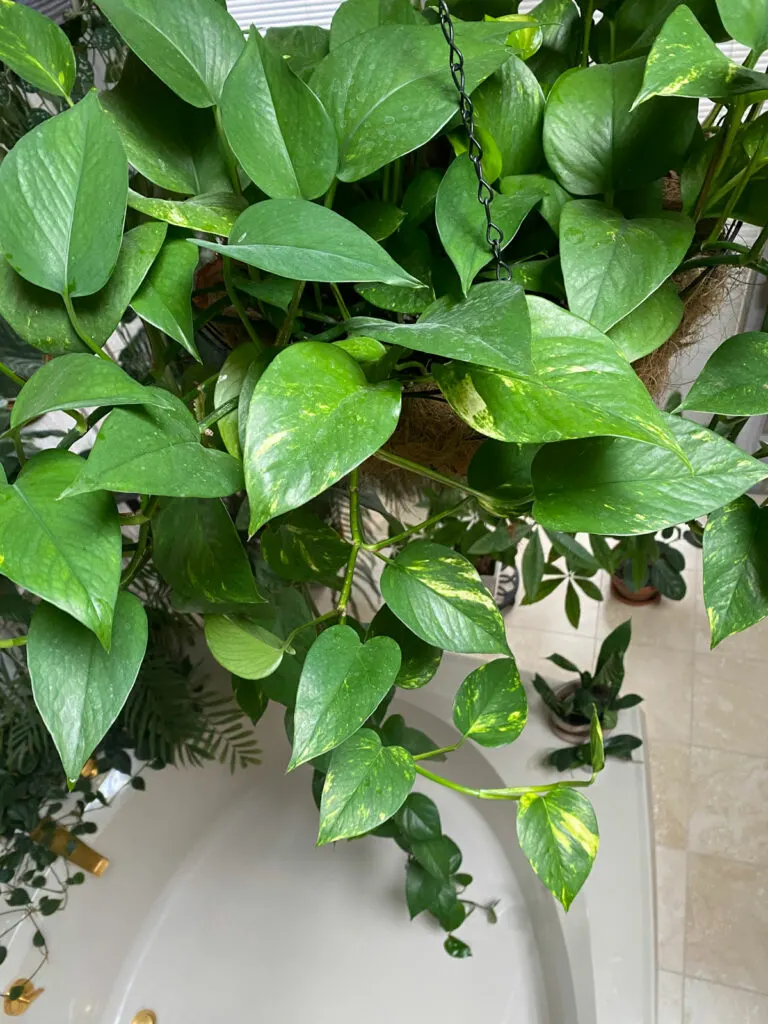
Pothos is arguably the most popular houseplant. And with an increasing number of Pothos varieties available, there is one for everyone.
Pothos propagation is also super simple and you will have an endless number of plants to share with friends and family, or to increase your own collection!
If you want to check out other plant selections for other exposure windows, check out my posts detailing plants for south-facing windows and plants for north-facing-windows.
Keep in mind that if you live in the northern hemisphere, an unobstructed south facing window will have full sun, and your north-facing windows will have indirect sunlight only and the least amount of light.
If you live in the southern hemisphere, it is the opposite. Your north facing windows will have the most direct sun, and your south facing windows will have no direct sun.
Regardless where you live in the world, unobstructed east windows will get morning sun, and unobstructed west windows will get afternoon sun.
I hope you’ve enjoyed this post on houseplants for your east facing windows. What do you grow in your east facing window? Comment below. I’d love to hear!

